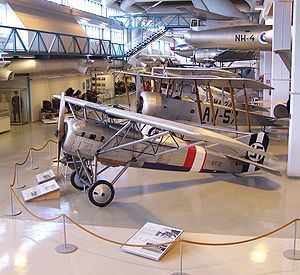Top speed 240 km/h Length 6.5 m Manufacturer Gourdou-Leseurre | Wingspan 9.4 m First flight 1920 | |
 | ||
The Gourdou-Leseurre GL.2 (originally, the Gourdou-Leseurre Type B) was a French fighter aircraft which made its maiden flight in 1918.
Contents
Design and development
The GL.2 was a development of the Gourdou-Leseurre Type A which had shown pleasing performance during testing but which had been ultimately rejected by the Aéronautique Militaire due to concerns about the rigidity of the wing. The Type B featured not only a new wing design, now braced by four struts on either side in place of the two per side on the Type A, but also a revised fin and rudder for improved directional stability, and strengthened undercarriage. Twenty examples were delivered in November 1918, designated GL.2C.1 in service, but the end of the war meant a loss of official interest.
Gourdou-Leseurre continued development anyway, and by 1920 had an improved version, designated GL.21 or B2 ready for exhibition at the Paris Salon de l'Aéronautique that year. This differed from the GL.2 mostly in having revised ailerons and a batch of twenty were purchased by the Aéronautique Militaire, with another one being purchased by Finland for evaluation.
Two years later, a further revision of the design appeared as the GL.22 or B3. This featured a redesigned wing of greater span, and modified horizontal stabiliser and landing gear. This proved to be a moderate success for Gourdou-Leseurre, selling to the Aéronautique Maritime as the GL.22C.1, as well as Finland, Czechoslovakia, Estonia, Latvia, and Yugoslavia. This was followed by a small series of test aircraft designated GL.23 or B4 before manufacture of the GL.22 resumed in an unarmed version known internally to the company as the B5 and purchased by both the Aéronautique Militaire and Aéronautique Maritime as the GL.22ET.1 for use as an advanced trainer (Ecole de Transition). One of these aircraft was used for trials aboard the aircraft carrier Béarn.
The GL.24 version was produced in small numbers in 1925 for various trial purposes, including one two-seat trainer conversion, and one air ambulance (TS - Transport Sanitaire) exhibited at an international medical conference held in Paris that year.
The GL.2 was also used as a display aircraft, with Gourdou-Leseurre test pilot André Christiany flying one to win the speed trial in the 1923 Coupe Michelin, and two ET.1s painted in the tricolore giving displays throughout France and North Africa the same year. Even well into the 1930s, specialised aerobatic versions were produced as the B6 and B7 for Jérôme Cavalli and Fernand Malinvaud respectively, with a second B7 built for Adrienne Bolland.
Variants
Operators
Specifications (GL.22C.1)
General characteristics
Performance
Armament
